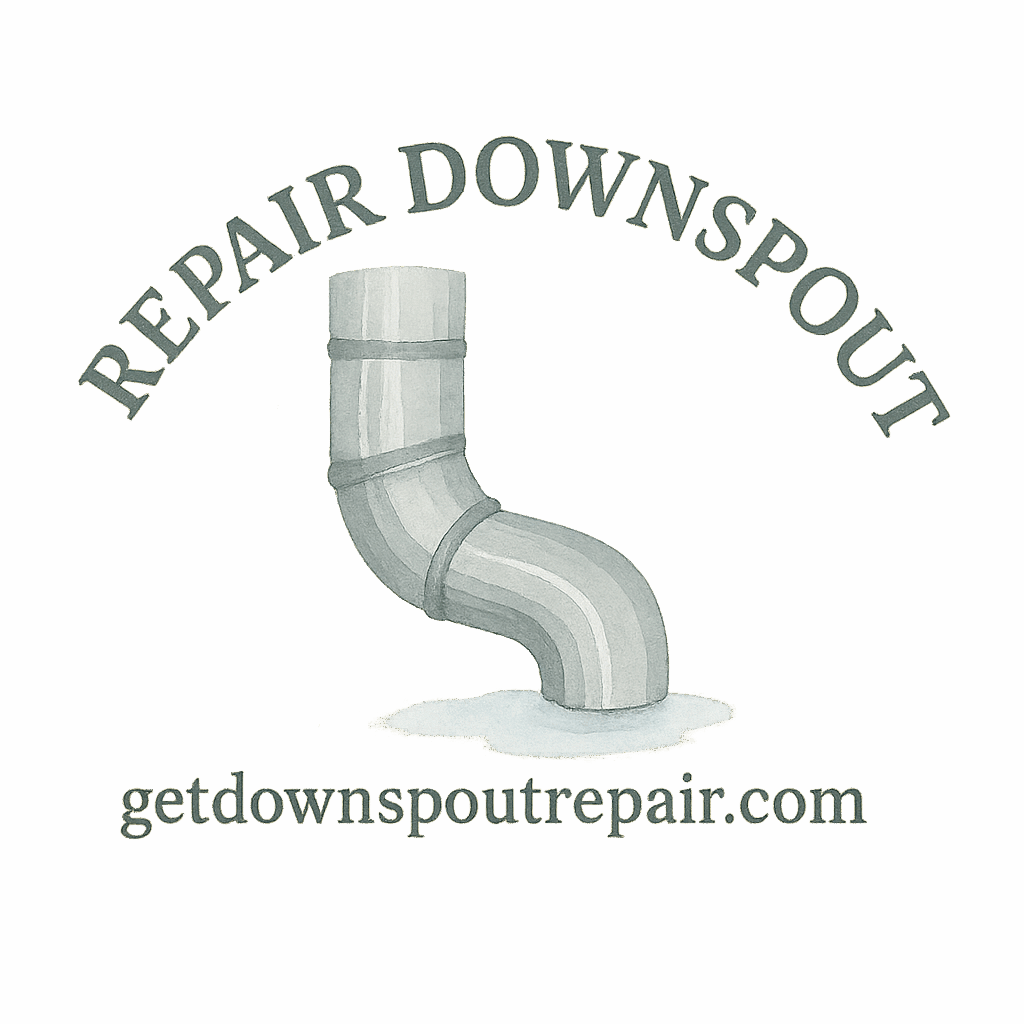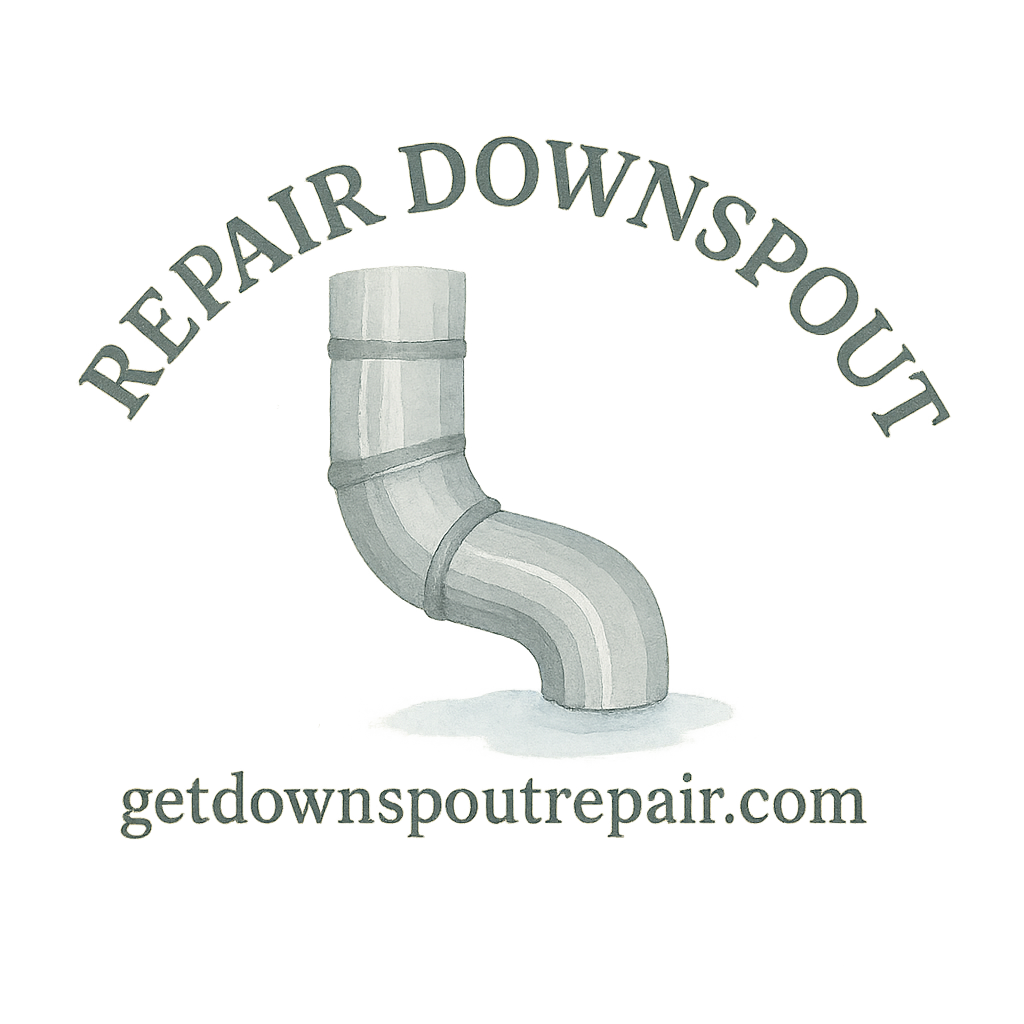Introduction: Why Downspout Repair Matters
If your gutters are the veins of your home, then downspouts are the arteries that carry the lifeblood—rainwater—safely away from your foundation. But what happens when your downspout clogs, leaks, or detaches? Water damage. Basement floods. Foundation cracks. Scary, right?
The good news is that you don’t always need to call in the pros. Many common problems can be fixed with DIY downspout repair using simple tools and techniques. Not only does this save money, but it also gives you control over your home’s maintenance.
In this guide, we’ll cover the 10 most common downspout problems you can fix yourself, step-by-step, along with some insider tips to make the job easier.
Understanding Downspouts and Their Role in Drainage
What Are Downspouts?
Downspouts are vertical pipes attached to your gutters that direct rainwater away from your house. Without them, water would cascade off your roof, creating erosion, foundation damage, and basement leaks.
Why Proper Maintenance Is Essential
Neglected downspouts are like clogged arteries—they lead to bigger, more expensive problems. With a little DIY downspout repair, you can prevent water damage, save money, and extend the lifespan of your entire gutter system.
For repair basics, check out this downspout repair guide.
Common Problems You Can Fix with DIY Downspout Repair
1. Downspout Clogs
Causes of Downspout Clogging
Leaves, dirt, small twigs, and even bird nests can block water flow. Seasonal neglect is the most common culprit.
Simple DIY Fixes for Clogs
- Use a plumber’s snake to push debris out.
- Flush with a garden hose from the top down.
- Install gutter guards to prevent repeat issues.
More prevention tips? Visit prevent clogging.
2. Leaky Joints
Why Joints Leak
Over time, sealants dry out and seams separate. This creates leaks where sections connect.
Sealing and Repairing Leaks
- Clean the joint thoroughly.
- Apply gutter sealant or waterproof caulk.
- For stubborn leaks, use aluminum patches.
Check out budget-friendly repair tips.
3. Loose or Detached Downspouts
Signs of Loose Fittings
If your downspout rattles in the wind or leans away from your wall, it’s loose.
How to Reattach Downspouts
- Use new brackets or straps to secure it.
- Drill into solid siding or brick for stability.
- Tighten screws for extra hold.
See more DIY tools at downspout gear.

4. Improper Downspout Angle
Identifying Poor Angles
Water should flow naturally downward. If it pools in the middle of your downspout, the slope is wrong.
Adjusting the Slope Correctly
- Loosen brackets.
- Reposition the downspout at a slight angle.
- Re-secure with screws.
Learn more on fix downspout issues.
5. Rust and Corrosion
Spotting Early Rust
Orange spots or bubbling paint are early warning signs.
Repairing vs. Replacing Rusted Sections
- Sand small rust patches and repaint with weatherproof paint.
- For heavy corrosion, replace the section entirely.
Check guides for quality products.
6. Cracks and Holes
Temporary Patch Solutions
Aluminum tape or epoxy can seal small cracks in minutes.
Long-Term Fixes
Cut out the damaged section and replace it with a new piece. Always secure with rivets and sealant.
Find cost details at costs and materials.
7. Water Pooling Near Foundation
Why This Happens
If downspouts are too short or improperly angled, water dumps right at your foundation.
Extending Downspouts for Better Drainage
- Add a downspout extension.
- Use splash blocks.
- Install underground drainage pipes.
For expert drainage tips, visit drainage protection.
8. Noisy Downspouts
Causes of the Noise
Constant dripping or rattling from wind vibrations.
Simple Noise-Reducing Fixes
- Place a sponge or scrub pad inside the elbow.
- Tighten loose brackets.
- Add insulation wrap.
Explore more DIY fixes.
9. Detached Elbows
Common Causes of Elbow Detachment
Heavy rain, ice buildup, or poor installation can knock elbows loose.
How to Reinstall and Secure Elbows
- Reinsert the elbow into the downspout opening.
- Use screws instead of rivets for easier future maintenance.
- Seal with gutter caulk.
Find more on repair now.
10. Downspout Misalignment
Recognizing Misalignment Issues
Your downspout should line up with the gutter outlet. If it’s off-center, water spills everywhere.
Realigning and Securing Properly
- Disconnect the downspout.
- Reposition it beneath the outlet.
- Reattach using brackets and screws.
Check solutions at repair guide.
Tools and Materials for DIY Downspout Repair
- Screwdriver & drill
- Plumber’s snake
- Gutter sealant
- Aluminum patches
- Brackets & straps
- Extension pieces
- Gloves & safety goggles
See full gear lists at DIY tools.
Benefits of DIY Downspout Repair
- Saves money compared to hiring pros
- Quick fixes prevent long-term water damage
- Empowers homeowners to handle minor issues
- Increases gutter system lifespan
More advantages? See benefits of DIY repair.
When to Call a Professional
Not every problem is a DIY fix. If you notice:
- Severe water damage
- Repeated clogs despite cleaning
- Large sections of rust or cracks
- Detached gutters
…it’s time to call in the experts. Learn more at pro help.
Conclusion
DIY downspout repair is like giving your home a quick tune-up. By handling small problems—clogs, leaks, loose fittings, and more—you can save money, protect your foundation, and extend the life of your gutter system. The key is to tackle issues early before they spiral into expensive repairs.
Whether you’re patching a crack, adjusting the angle, or quieting a noisy pipe, these 10 common problems are totally manageable with the right tools and a little know-how.
Ready to get started? Visit Get Downspout Repair for detailed guides, tips, and expert advice.
FAQs
1. How often should I clean my downspouts to prevent clogs?
At least twice a year—spring and fall. More often if you have lots of trees nearby.
2. What’s the quickest way to unclog a downspout?
Use a garden hose with high pressure or a plumber’s snake to dislodge debris.
3. Can I repair rusted downspouts or do I need to replace them?
Small rust spots can be sanded and repainted, but heavily corroded sections should be replaced.
4. How do I stop my downspout from being so noisy?
Insert a sponge or scrub pad inside the elbow to absorb the drip sound.
5. What tools should every homeowner have for downspout repair?
A drill, brackets, gutter sealant, plumber’s snake, and aluminum patches are essentials.
6. Can water pooling near my foundation cause real damage?
Yes, it can lead to foundation cracks, basement flooding, and soil erosion if not fixed quickly.
7. When should I call a professional instead of doing a DIY fix?
If you see structural damage, severe leaks, or large cracks that DIY patches can’t handle, hire a pro.


